The Longest Day

Brief Synopsis
Cast & Crew
John Wayne
Robert Mitchum
Henry Fonda
Robert Ryan
Rod Steiger
Robert Wagner
Film Details
Technical Specs

Synopsis
In 1944, Gen. Dwight D. Eisenhower makes the momentous decision that the combined Allied invasion of Europe will take place on the 6th of June. The decision proves to be strategically wise: the German High Command, assuming the invasion will not take place during the current inclement weather, is caught unawares; Panzer divisions are awaiting the attack at Dover, the Luftwaffe is scattered, and Hitler himself has taken a sleeping pill and left orders that he is not to be disturbed. Allied sources alert the French Resistance, who cut telegraph wires and blow up ammunition trains. Dummy parachute figures are dropped to confuse the Germans. Airborne glider infantry are landed near the key site of the Orne River Bridge. Then, at dawn, the full Allied might is unleashed as 150,000 troops, backed up by 5,000 transport and fighter vessels, storm the three major Normandy beachheads of Juno, Omaha, and Utah. Although a division of paratroopers is slaughtered when they overshoot their mark, French commandos capture the seaside town of Oistreham and American Rangers successfully scale the supposedly-impregnable cliffs of Point-du-Hoc. It is at Omaha Beach that the assault falters; held back by a seemingly impregnable cement wall, the troops are unable to advance. But Brigadier General Cota rallies his men, urges Sergeant Fuller to place a dynamite charge, and blasts a clear path from the beach. With the coming of nightfall, the Allies are firmly entrenched on European soil.

Cast

John Wayne

Robert Mitchum

Henry Fonda
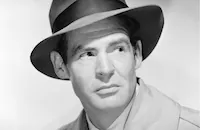
Robert Ryan

Rod Steiger

Robert Wagner

Richard Beymer

Mel Ferrer

Jeffrey Hunter

Paul Anka

Sal Mineo

Roddy Mcdowall
Stuart Whitman

Eddie Albert

Edmond O'brien
Fabian

Red Buttons

Tom Tryon

Alexander Knox

Tommy Sands

Ray Danton
Henry Grace
Mark Damon

Dewey Martin

Steve Forrest
John Crawford

Ron Randell
Nicholas Stuart
John Mellon
Fred Dürr

Richard Burton

Kenneth More

Peter Lawford

Richard Todd
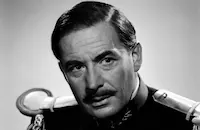
Leo Genn

John Gregson

Sean Connery
Jack Hedley

Michael Medwin

Norman Rossington
John Robinson
Patrick Barr
Donald Houston
Trevor Reid
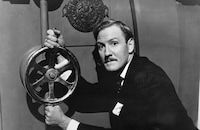
Leslie Phillips

Richard Wattis

Christopher Lee
Irina Demick
Bourvil
Jean-louis Barrault

Christian Marquand
Arletty
Madeleine Renaud
Georges Rivière

Georges Wilson

Jean Servais
Fernand Ledoux
Daniel Gélin
Françoise Rosay
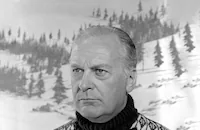
Curt Jurgens
Werner Hinz
Paul Hartmann
Peter Van Eyck
Gert Fröbe
Hans Christian Blech

Wolfgang Preiss
Heinz Reincke
Richard Munch
Ernst Schröder
Kurt Meisel
Wolfgang Lukschy
Eugene Deckers
Crew
Paul Anka
Ken Annakin
Comdt. Jean Barral
Léon Barsacq
Karl Baumgartner
Gabriel Bechir
Samuel E. Beetley
Lieut. Col. Roger Bligh
Gen. Gunther Blumentritt
Jean Bourgoin
Jo De Bretagne
Comdr. Willard L. Bushy
Capt. John Crewdson
Comdt. Hubert Deschard
Earl Of Lovat
Bernard Farrel
Jean Fouchet
Romain Gary
Lieut. Gen. James M. Gavin
Ted Haworth
Karl Helmer
Lieut. Col. A. J. Hillebrand
Maj. John Howard
Maurice Jarre
Col. James R. Johnson
James Jones
Maj. Philip J. Kieffer
Gen. D'armée Pierre Koenig
Vincent Korda
Capt. Helmuth Lang
Augie Lohman
Robert Macdonald
Andrew Marton
Jacques Maumont
Mitch Miller
Gen. Frederick Morgan
Gerd Oswald
Lieut. Comdr. E. C. Peake
Lieut. Gen. Max Pemsel
Henri Persin
Tom Pevsner
Louis Pitzelé
Maj. Werner Pluskat
Cap. Fernand Prévost
Col. Josef Priller
David Pursall
Gerard Renateau
Lucie Maria Rommel
V. Adm. Friedrich Ruge
Cornelius Ryan
Col. Albert Saby
Col. Joseph B. Seay
Jack Seddon
William Sivel
Henri Sokal
Guy Tabary
Alex Weldon
Bernhard Wicki
Elmo Williams
Walter Wottitz
Darryl F. Zanuck
Darryl F. Zanuck
Richard D. Zanuck

Videos
Movie Clip






Trailer
Hosted Intro





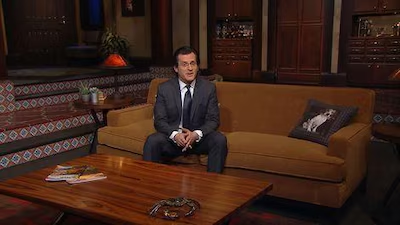
Film Details
Technical Specs

Award Wins
Best Cinematography
Best Cinematography
Best Special Effects
Award Nominations
Best Art Direction
Best Editing
Best Picture
Articles
The Longest Day
Everyone from John Wayne to Henry Fonda to Robert Mitchum to Eddie Albert gets a few moments of screen time, with teen idols like Paul Anka, Tommy Sands, and Fabian thrown into the mix to attract the younger viewers. Zanuck was operating on such a grand scale, he needed no less than four directors to shoot the film, with numerous assistants working the perimeter. The final product, though often memorable, seems more like an exposition-laced military maneuver than an actual narrative. Regardless of what's going on ?- and there's always something going on -- it's not hard to imagine Zanuck standing beside the camera, heatedly chomping his cigar while he writes his Oscar® acceptance speech.
Well, he didn't win the Best Picture Oscar® though the film garnered five nominations, winning two (one for Best Cinematography and one for Best Special Effects). But Zanuck did produce one of the more insanely ambitious films in movie history, even if it doesn't always succeed. Viewers who are looking for moments as visceral as Saving Private Ryan's (1998) Omaha Beach sequence will be disappointed. Despite Zanuck's goal of showing us the real blood and guts of battle, the violence is as stylized and predictable as in any Hollywood war movie. Actually, the film that The Longest Day most closely resembles is Richard Attenborough's equally cumbersome (and star-laden) A Bridge Too Far (1977). There are moments of high drama in The Longest Day, including a sequence where the Allies are parachuting into Saint Mere Englise, only to be ambushed by German snipers. But the real drama of The Longest Day was happening behind the scenes.
In his autobiography, So You Wanna Be a Director, Ken Annakin, one of the three directors of the film, said "One of Zanuck's great film conceptions was an eight-minute helicopter shot showing the attack around the casino at Ouistreham. It was a very involved shot showing the Free French Troops in action. It involved nuns being rescued from a convent and the overcoming of the Germans on the casino roof. Every director who had been on the picture had tried to complete this sequence to Zanuck and his editorial advisor, Elmo Williams' satisfaction. So, I found myself introduced to Gilbert Chomat, French helicopter wizard pilot, who could do anything with an Alouette and had an uncanny sense of swinging the camera exactly where you wanted it - so long as you gave him detailed instructions...The shot I'm still very proud of is the sequence which survived into the final edit of The Longest Day." Annakin also experienced Zanuck's strong reaction to certain actors. "Sean Connery had been sent over from London by Maude Spector (from my Disney casting days) to play a double act-cameo with a young English actor, Norman Rossington. Zanuck immediately took a dislike to Sean and said, 'That Limey mumbles his lines and looks like a slob!'"
Much more to Zanuck's liking was a young French actress, Irina Demick, who was one of the few women to appear in a substantial role in the film. Brigitte Bardot and Marina Vlady had originally been approached for the part but turned it down. Demick not only won the role, but also became Zanuck's mistress during the production.
It's difficult to pinpoint the real "star" of The Longest Day, but Robert Mitchum would have to rank high on the list. As General Norman Cota, the Allied commander of the Twenty-ninth Infantry Division, he somehow manages to convey the gravity of the situation without coming across like a movie star wearing an Army suit. Many of the other faces are so familiar such as John Wayne, Henry Fonda, and Richard Burton that it's hard to convince yourself that these actors represent real people caught up in earth-shattering events. Many critics at the time noted that the array of celebrities on display became a constant distraction but there were a few renowned reviewers who praised the film in spite of that. Bosley Crowther of the New York Times wrote "It is hard to think of a picture, aimed and constructed as this one was, doing any more or any better or leaving one feeling any more exposed to the horror of war than this one does."
This sort of production is always a breeding ground for oddball occurrences and trivia, and The Longest Day is no different. Perhaps it's best to simply list some of the more interesting tidbits:
-Roddy McDowall only appears in the film because he was in Italy, pulling his hair out over the endless delays on Cleopatra (1963). He begged Zanuck to cast him in The Longest Day simply because he wanted a chance to actually act for a while!
-Richard Todd (Maj. John Howard) fought at Normandy on D-Day while a member of the British Air Force. He entered the fray, as did hundreds of other men, via a highly dangerous parachute drop.
-The real-life American soldiers who Zanuck hired to storm Omaha Beach in the picture were reluctant to enter the water because it was too cold, but they finally relented when a disgusted Mitchum jumped in first.
-The producers had to make certain that members of a nearby nudist colony didn't wander onto the beach during the "invasion."
-Sean Connery, who, of course, would make his name playing James Bond, appears in the film opposite Gert Frobe and Curd Jurgens, two future Bond villains.
-Dwight D. Eisenhower was interested in playing himself in The Longest Day, but it was determined that he simply looked too old to pull it off! (Forget World War II- several years in the White House will do that to you.)
Perhaps the most important piece of information, as far as Zanuck was concerned, was that The Longest Day cost $10,000,000 to make - an astronomical amount at the time. But it earned back every penny, and then some. In Hollywood terms, anyway, that's called winning the battle.
Directors: Ken Annakin, Andrew Marton, Bernhard Wicki, Gerd Oswald
Producers: Darryl F. Zanuck
Screenplay: Romain Gary, James Jones, David Pursall (based on the book by Cornelius Ryan)
Cinematography: Jean Bourgoin, Pierre Levent, Henri Persin, Guy Tabary, Walter Wottitz
Editor: Samuel E. Beetley
Music: Maurice Jarre
Song: Paul Anka
Production Design: Edward S. Haworth
Art Direction: Leon Barsacq, Vincent Korda
Associate Producer: Elmo Williams
Set Design: Gabriel Bechir
Principal Cast: John Wayne (Lt. Col. Benjamin Vandervoort), Robert Mitchum (Brig. Gen. Norman Cota), Henry Fonda (Brig. Gen. Theodore Roosevelt), Robert Ryan (Brig. Gen. James M. Gavin), Rod Steiger (Destroyer Commander), Richard Todd (Maj. John Howard), Richard Burton (Downed R.A.F. Pilot), Robert Wagner (U.S. Ranger), Jeffrey Hunter (Sgt. Fuller), Mel Ferrer (Maj. Gen. Robert Haines), Paul Anka (U.S. Ranger), Sal Mineo (Pvt. Martini), Roddy McDowall (Pvt. Morris), Stuart Whitman (Lt. Sheen), Eddie Albert (Col. Tom Newton), Edmond O'Brien (Gen. Raymond O. Barton), Fabian (U.S. Ranger), Red Buttons (Pvt. John Steele), Tommy Sands (U.S. Ranger), Peter Lawford (Lord Lovat), Sean Connery (Pvt. Flanagan).
BW-178m. Letterboxed.
by Paul Tatara

The Longest Day
Eddie Albert (1906-2005)
The son of a real estate agent, Albert was born Edward Albert Heimberger in Rock Island, Ill., on April 22, 1906. His family relocated to Minneapolis when he was still an infant. Long entralled by theatre, he studied drama at the University of Minnesota. After years of developing his acting chops in touring companies, summer stock and a stint with a Mexican circus, he signed a contract with Warner Bros. and made his film debut in Brother Rat (1938). Although hardly a stellar early film career, he made some pleasant B-pictures, playing slap happy youths in Brother Rat and a Baby (1940), and The Wagons Roll at Night (1941).
His career was interrupted for military service for World War II, and after his stint (1942-45), he came back and developed a stronger, more mature screen image: Smash-Up: The Story of a Woman (1947); Carrie (1952); his Oscar® nominated turn as the Bohemian photographer friend of Gregory Peck in Roman Holiday (1953); a charming Ali Hakim in Oklahoma (1955); and to many critics, his finest hour as an actor, when he was cast unnervingly against type as a cowardly military officer whose lack of commitment to his troops results in their deaths in Attack! (1956).
As he settled into middle-age, Albert discovered belated fame when he made the move to Hooterville. For six seasons (1965-71), television viewers loved Eddie Albert as Oliver Wendal Douglas, the bemused city slicker who, along with his charming wife Lisa (Eva Gabor), takes a chance on buying a farm in the country and dealing with all the strange characters that come along their way. Of course, I'm talking about Green Acres. If he did nothing else, Alberts proved he could be a stalwart straight man in the most inane situations, and pull it off with grace.
After the run of Green Acres, Albert found two of his best roles in the late stages of his career that once again cast him against his genial, good-natured persona: the fiercly overprotective father of Cybill Shepherd in The Heartbreak Kid (1972), for which he earned his second Oscar® nomination; and the sadistic warden in Robert Aldrich's raucous gridiron comedy The Longest Yard (1974). Soon, Albert was in demand again, and he had another hit series, playing a retired police officer who partners with a retired con artist (Robert Wagner) to form a detective agency in Switch (1975-78).
The good roles slowed down slightly by the dawn of the '80s, both film: The Concorde: Airport '79 (1979), How to Beat the High Co$t of Living (1980), Take This Job and Shove It (1981); and television: Highway to Heaven, Murder, She Wrote, Thirtysomething, offered him little in the way of expansion. Yet, Albert spent his golden years in a most admirable fashion, he became something of activist for world health and pollution issues throughout the latter stages of his life. It is widely acknowledged that International Earth Day (April 22) is honored on his birthday for his tireless work on environemental matters. Albert was married to famed hispanic actress Margo (1945-85) until her death, and is survived by his son, actor Edward Albert, a daughter, and two granddaughters.
by Michael T. Toole
Eddie Albert (1906-2005)
TCM Remembers - Rod Steiger
ROD STEIGER, 1925 - 2002
From the docks of New York to the rural back roads of Mississippi to the war torn Russian steppes, Rod Steiger reveled in creating some of the most overpowering and difficult men on the screen. He could be a total scoundrel, embodying Machiavelli's idiom that "it's better to be feared than loved" in the movies. But as an actor he refused to be typecast and his wide range included characters who were secretly tormented (The Pawnbroker, 1965) or loners (Run of the Arrow, 1965) or eccentrics (The Loved One, 1965).
Along with Marlon Brando, Steiger helped bring the 'Method School' from the Group Theater and Actors Studio in New York to the screens of Hollywood. The Method technique, taught by Stella Adler and Lee Strasberg, insisted on complete immersion into the character's psyche and resulted in intense, dramatic performances and performers. Steiger made his first significant screen appearance as Brando's older brother in On the Waterfront (1954). Their climatic scene together in a taxicab is one of the great moments in American cinema.
It was a short leap from playing a crooked lawyer in On the Waterfront to playing the shady boxing promoter in The Harder They Fall (1956). Based on the tragic tale of true-life fighter Primo Carnera, The Harder They Fall details the corruption behind the scenes of professional boxing bouts. Steiger is a fight manager named Nick Benko who enlists newspaperman Eddie Willis (Humphrey Bogart in his final screen appearance) to drum up publicity for a fixed prizefight. While the boxing scenes were often brutally realistic, the most powerful dramatic moments took place between Steiger and Bogart on the sidelines.
As mob boss Al Capone (1959), Steiger got to play another man you loved to hate. He vividly depicted the criminal from his swaggering early days to his pathetic demise from syphilis. In Doctor Zhivago (1965), Steiger was the only American in the international cast, playing the hateful and perverse Komarovsky. During the production of Dr. Zhivago, Steiger often found himself at odds with director David Lean. Schooled in the British tradition, Lean valued the integrity of the script and demanded that actors remain faithful to the script. Steiger, on the other hand, relied on improvisation and spontaneity. When kissing the lovely Lara (played by Julie Christie), Steiger jammed his tongue into Christie's mouth to produce the desired reaction - disgust. It worked! While it might not have been Lean's approach, it brought a grittier edge to the prestige production and made Komarovsky is a detestable but truly memorable figure.
Steiger dared audiences to dislike him. As the smalltown southern Sheriff Gillespie in In The Heat of the Night (1967), Steiger embodied all the prejudices and suspicions of a racist. When a black northern lawyer, played by Sidney Poitier, arrives on the crime scene, Gillespie is forced to recognize his fellow man as an equal despite skin color. Here, Steiger's character started as a bigot and developed into a better man. He finally claimed a Best Actor Academy Award for his performance as Sheriff Gillespie.
Steiger was an actor's actor. A chameleon who didn't think twice about diving into challenging roles that others would shy away from. In the Private Screenings interview he did with host Robert Osborne he admitted that Paul Muni was one of his idols because of his total immersion into his roles. Steiger said, "I believe actors are supposed to create different human beings." And Steiger showed us a rich and diverse cross section of them.
by Jeremy Geltzer & Jeff Stafford
TCM Remembers - Rod Steiger
Quotes
The thing that's always worried me about being one of the few is the way we keep on getting fewer.- Flight Officer David Campbell
There is fire at the travel agency.- Radio announcer
I don't have to tell you the story. You all know it. Only two kinds of people are gonna stay on this beach: those that are already dead and those that are gonna die. Now get off your butts. You guys are the Fighting 29th.- Brigadier General Norman Cota
You can't give the enemy a break. Send him to hell.- Lieutenant Colonel Benjamin Vandervoort
He's dead. I'm crippled. You're lost. Do you suppose it's always like that? I mean war.- Flight Officer David Campbell
Trivia
Richard Todd (Major Howard of the British 6th Airborne) was himself in Normandy on D-Day, and participated as Lt. Todd of the British 6th Airborne in the glider assault on the Orne River Bridge.
As a 22-year-old private, Joseph Lowe landed on Omaha Beach on D-Day with the Fifth Ranger Battalion and scaled the cliffs at Pointe Du Hoc. He scaled those hundred-foot cliffs all over again, for the cameras, some 17 years later.
Darryl F. Zanuck was quoted in an interview as saying that he didn't think much of actors forming their own production companies, citing 'Wayne, John' 's Alamo, The (1960) project as a failure of such ventures. Wayne found out about this interview before being approached by Zanuck, and refused to accept to be in this movie unless he was paid $250,000 for his role (when the other famous actors were being paid $25,000 for the same movie). Wayne got his requested salary.
Henry Grace was not an actor when being cast as Dwight D. Eisenhower, but his remarkable resemblance to Eisenhower got him the role.
Sean Connery, who made his debut as James Bond also in 1962, acted in the movie along with Gert Frobe and 'Curt Jurgens' - two future Bond villains.
Notes
Darryl F. Zanuck claims to have directed the American and British interiors. Dewey Martin's role was cut from the final release print.

Miscellaneous Notes
Voted Best Picture of the Year by the 1962 National Board of Review.
Voted One of the Year's Ten Best by the 1962 New York Times Film Critics.
Released in United States 1962
Released in United States on Video May 25, 1989
Re-released in United States on Video May 17, 1994
Released in United States March 1980
Formerly distributed by CBS/Fox Video.
Scope
Released in United States 1962
Released in United States on Video May 25, 1989
Re-released in United States on Video May 17, 1994
Released in United States March 1980 (Shown at FILMEX: Los Angeles International Film Exposition (The Epic: A Monumental Movie Marathon) March 4-21, 1980.)














